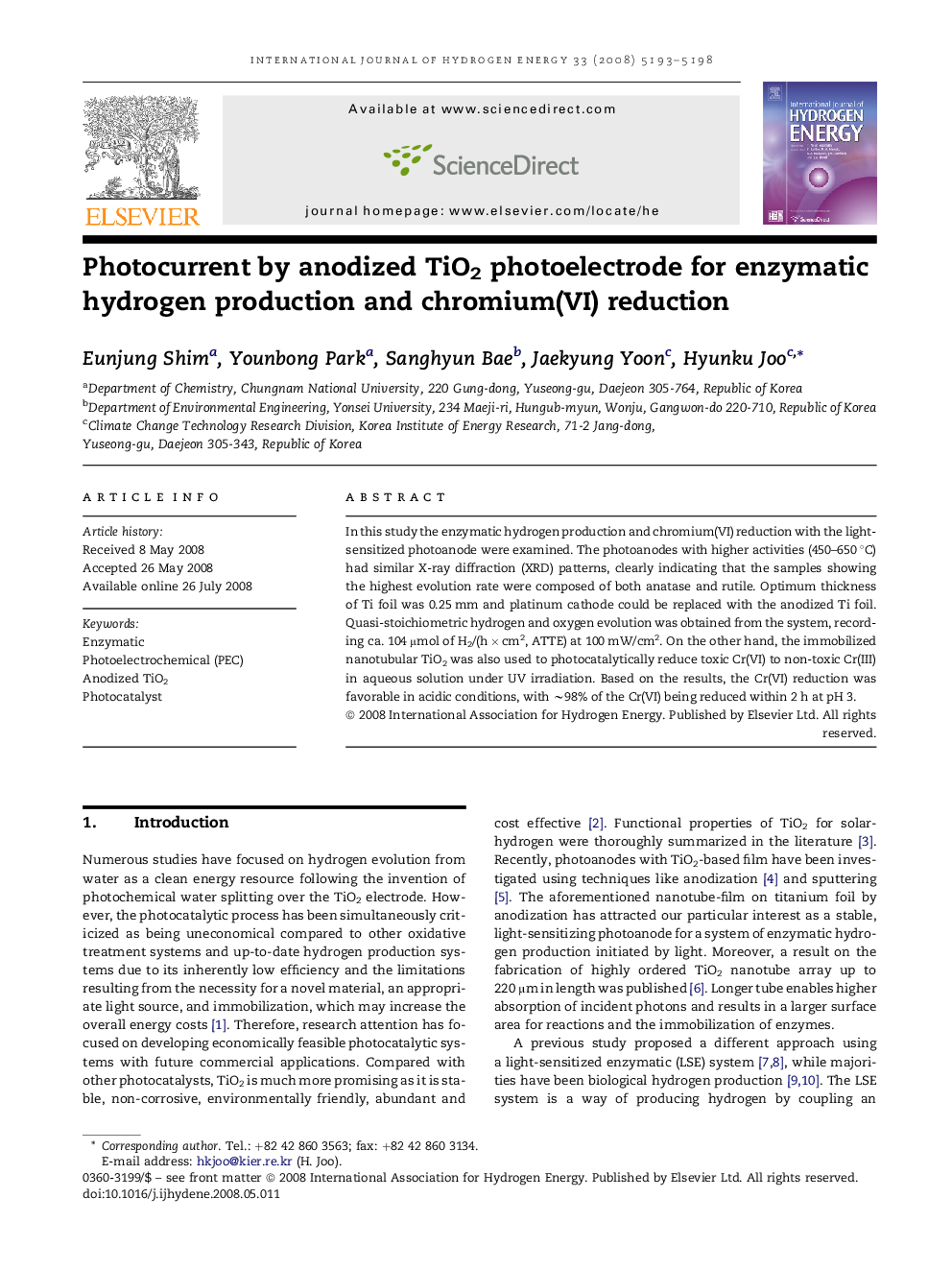| Article ID | Journal | Published Year | Pages | File Type |
|---|---|---|---|---|
| 1281435 | International Journal of Hydrogen Energy | 2008 | 6 Pages |
In this study the enzymatic hydrogen production and chromium(VI) reduction with the light-sensitized photoanode were examined. The photoanodes with higher activities (450–650 °C) had similar X-ray diffraction (XRD) patterns, clearly indicating that the samples showing the highest evolution rate were composed of both anatase and rutile. Optimum thickness of Ti foil was 0.25 mm and platinum cathode could be replaced with the anodized Ti foil. Quasi-stoichiometric hydrogen and oxygen evolution was obtained from the system, recording ca. 104 μmol of H2/(h × cm2, ATTE) at 100 mW/cm2. On the other hand, the immobilized nanotubular TiO2 was also used to photocatalytically reduce toxic Cr(VI) to non-toxic Cr(III) in aqueous solution under UV irradiation. Based on the results, the Cr(VI) reduction was favorable in acidic conditions, with ∼98% of the Cr(VI) being reduced within 2 h at pH 3.
